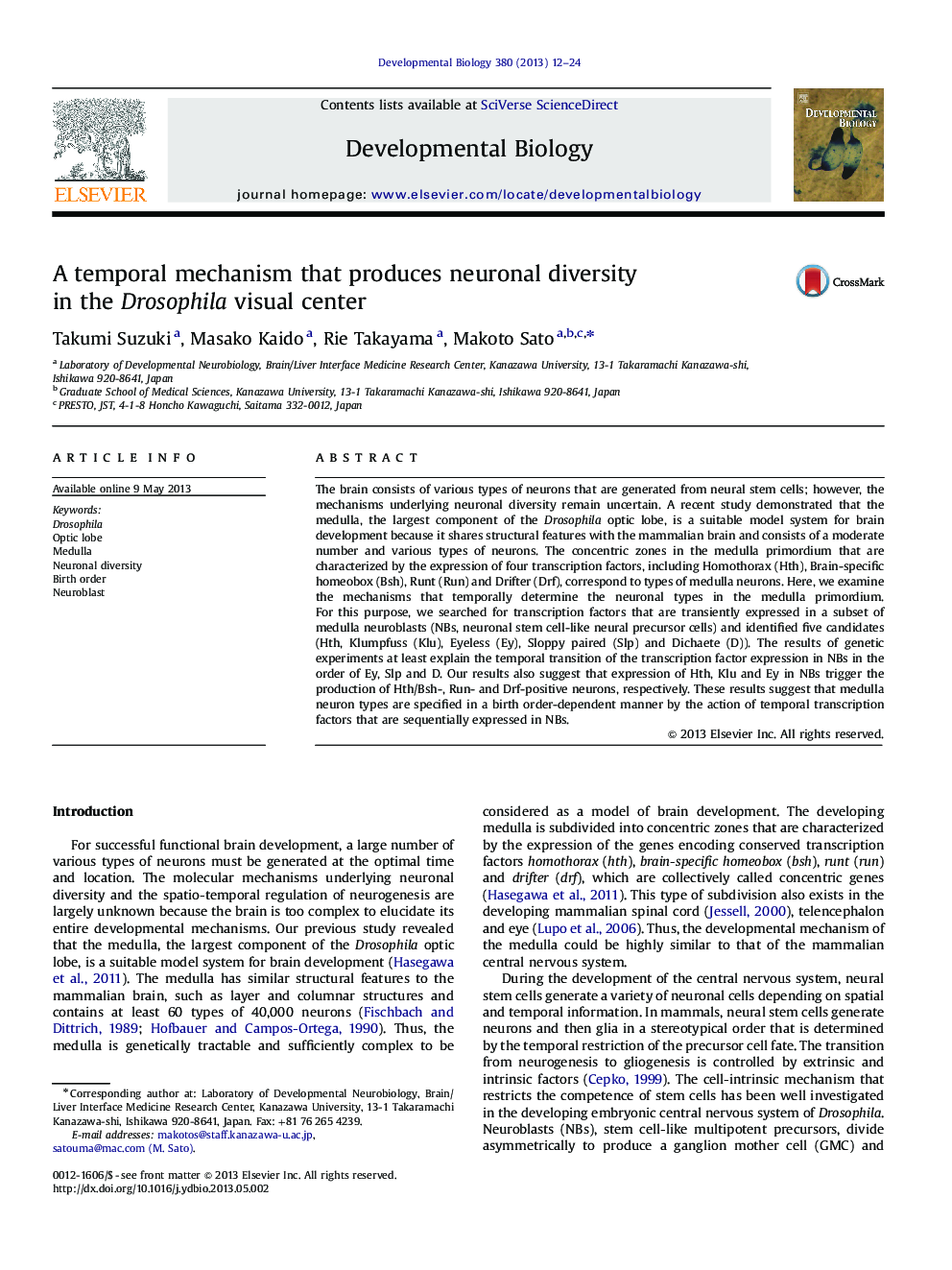| Article ID | Journal | Published Year | Pages | File Type |
|---|---|---|---|---|
| 2173052 | Developmental Biology | 2013 | 13 Pages |
•Birth order-dependent mechanism produces neuronal diversity in fly medulla.•Hth, Klu, Ey, Slp and D are transiently and sequentially expressed in neuroblasts.•Mechanisms for temporal transition of Ey, Slp and D expression are demonstrated.•Hth-, Klu-, Ey-positive NBs produce Bsh-, Run- and Drf-positive neurons, respectively.
The brain consists of various types of neurons that are generated from neural stem cells; however, the mechanisms underlying neuronal diversity remain uncertain. A recent study demonstrated that the medulla, the largest component of the Drosophila optic lobe, is a suitable model system for brain development because it shares structural features with the mammalian brain and consists of a moderate number and various types of neurons. The concentric zones in the medulla primordium that are characterized by the expression of four transcription factors, including Homothorax (Hth), Brain-specific homeobox (Bsh), Runt (Run) and Drifter (Drf), correspond to types of medulla neurons. Here, we examine the mechanisms that temporally determine the neuronal types in the medulla primordium. For this purpose, we searched for transcription factors that are transiently expressed in a subset of medulla neuroblasts (NBs, neuronal stem cell-like neural precursor cells) and identified five candidates (Hth, Klumpfuss (Klu), Eyeless (Ey), Sloppy paired (Slp) and Dichaete (D)). The results of genetic experiments at least explain the temporal transition of the transcription factor expression in NBs in the order of Ey, Slp and D. Our results also suggest that expression of Hth, Klu and Ey in NBs trigger the production of Hth/Bsh-, Run- and Drf-positive neurons, respectively. These results suggest that medulla neuron types are specified in a birth order-dependent manner by the action of temporal transcription factors that are sequentially expressed in NBs.
Graphical abstractFigure optionsDownload full-size imageDownload high-quality image (172 K)Download as PowerPoint slide
